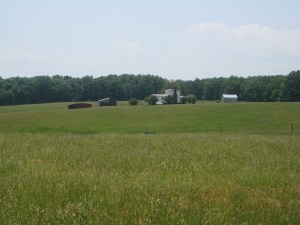The Battle of Trevilian Station

Having been fought to a standstill in front of Robert E. Lee’s lines at Cold Harbor in early June, 1864, Lieut. Gen. Ulysses S. Grant decided to swing past Lee’s right flank, cross the James River and assail the rail center of Petersburg. To help mask this movement, Grant decided to dispatch his Cavalry Chief, Maj. Gen. Philip Sheridan into central Virginia. Sheridan would take two of his three divisions, commanded by Brig. Gens. Alfred Torbert and David Gregg on the expedition. Sheridan was not only to divert Lee’s attention from Grant’s march, but to wreck one of the Confederates supply lines, the Virginia Central Railroad. Following the destruction of the railroad, Little Phil was to proceed west to the city of Charlottesville and from there cooperate with Union forces operating in the Shenandoah Valley under Maj. Gen. David Hunter.
On June 7, Sheridan left the Army of the Potomac. It was not long before his counterparts detected the movement. Maj. Gen. Wade Hampton and his division, along with the division of Maj. Gen. Fitzhugh Lee set off to intercept the Yankees. Hampton, a veteran cavalryman who had proven himself at Brandy Station and Haw’s Shop, was not long on figuring out Sheridan’s destination. In three days of hard riding, Hampton was able to reach Trevilian’s Station on the Virginia Central, just a few miles west of Louisa Court House.
That evening, Hampton bedded down near the station, while Lee went into camp near the courthouse. To the north, Sheridan encamped near Clayton’s Store. Ironically, both Hampton and Sheridan had devised the same battle plan for the following day. Each would send their troopers straight toward one another while Sheridan would use Brig. Gen. George Custer’s brigade and Hampton Lee’s division, to slice in to their opponents’ rear.

One the morning of June 11, Hampton moved out of the station with two of his brigades. Running into Torbert, the troopers engaged in dismounted fighting amongst the thick timber that dotted the region. With the sound of the fighting echoing in his ears, Custer advanced to the Gordonsville Road. Reaching the thoroughfare, the “boy general of the golden lock” was presented with a golden opportunity. Before him in a large, open clearing stood Hampton’s entire wagon train. With such a prize within reach, Custer sent his men thundering toward the wagons, only to run into Hampton’s last brigade under Thomas L. Rosser, one of Custer’s closest antebellum friends. Rosser’s Rebels began to push Custer back, when the Boy General was greeted with a frightening sight. Pushing into the rear of his line was Fitz Lee’s division, coming up from Louisa Court House. Custer’s lines contorted into a “living triangle” as his troopers were surrounded on all sides. With the help of their seven shot Spencer repeating carbines and several acts of personal valor on the part of Custer, the brigade was able to hold on in an intense three hour fight. Finally, Brig. Gen. Wesley Merritt’s Reserve Brigade was able to break through and relieve their comrades.
Finally forced out of Trevilian’s, Hampton withdrew to the west and took up a new position on a farm owned by the Ogg family. The next morning, Sheridan ordered David Gregg to tear up the railroad around the station while Torbert’s spent division attempted to drive Hampton from the Ogg Farm. Throughout the day, Torbert sent his men against Hampton’s lines in a number of failed assaults. Hampton, ever the tactician, had plans for Torbert. As his men held out against the Union troopers, the South Carolinian was cooperating with Lee. Making a circuitous march around both sides, Lee took up a position on Torbert’s exposed right flank late in the day. Shortly before dark, he sent his men forward. The assault collapsed Torbert’s line and the Yankees withdrew to the safety of Trevilian Station. On the morning of June 13, Sheridan began his long march back to the Union army, now ensconced outside Petersburg. It would take twelve more days for the failed expedition to reach the Federal lines.

1 Response to The Battle of Trevilian Station